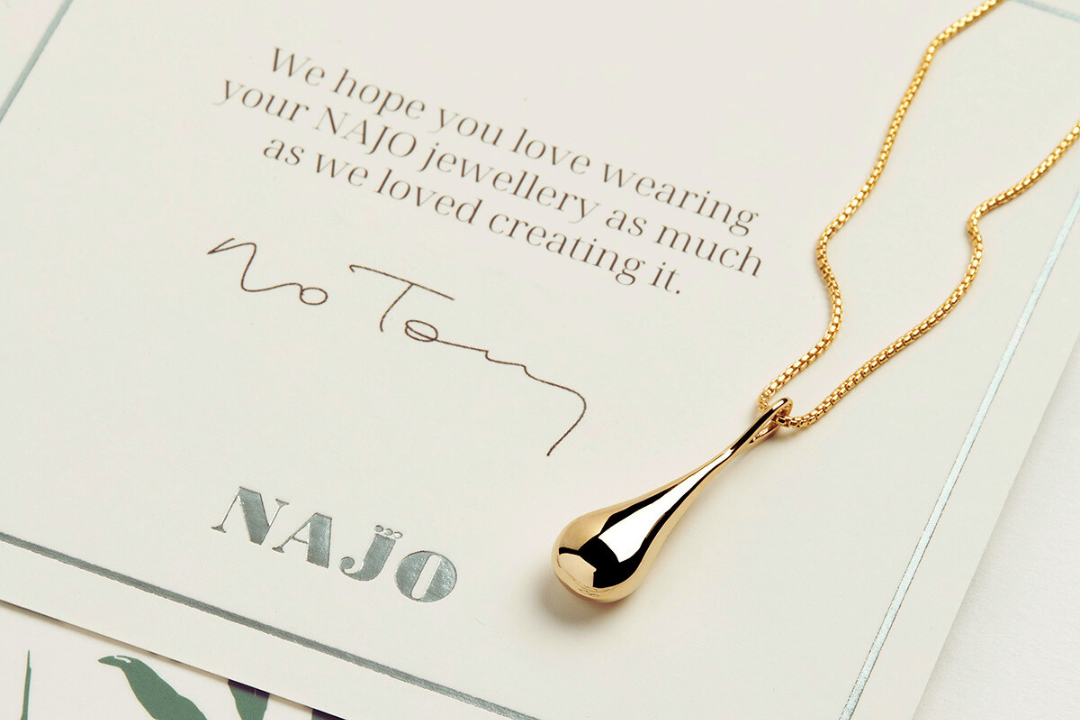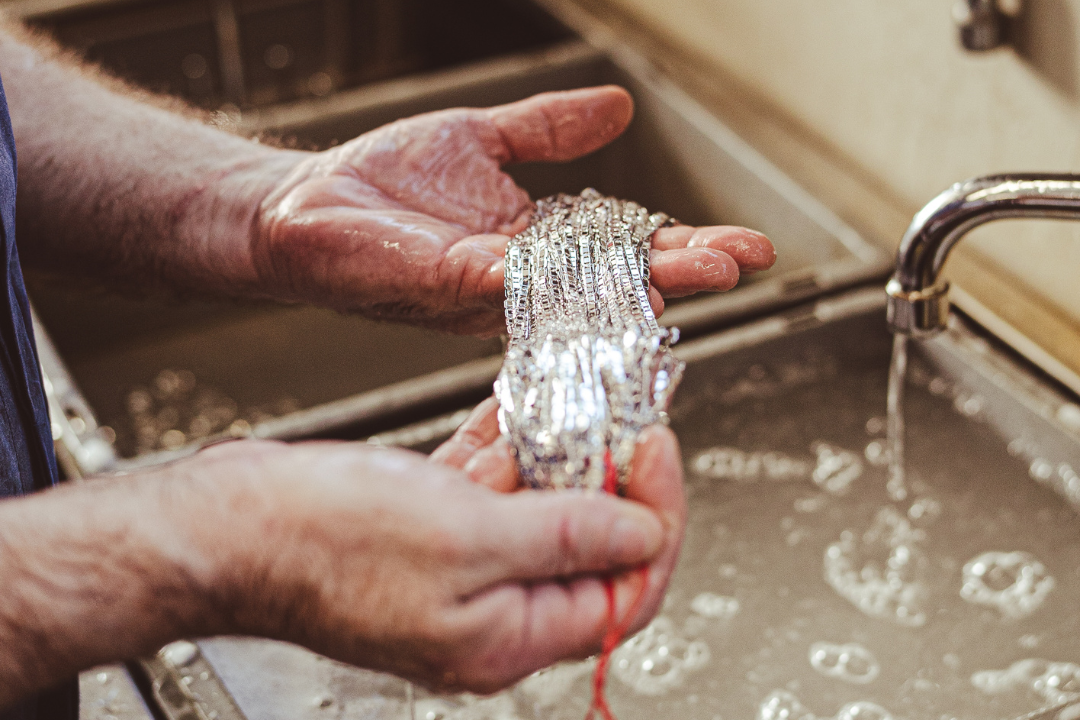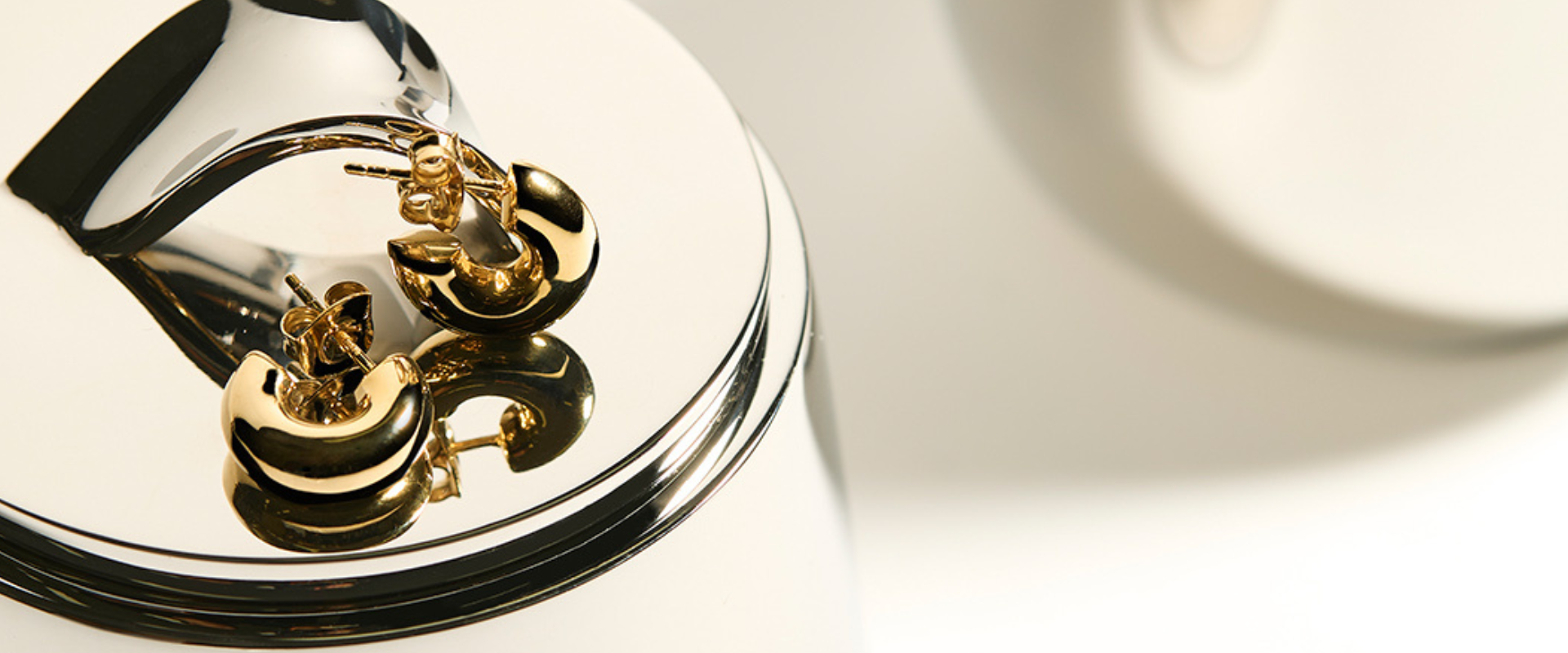Welcome to NAJO's definitive guide on cleaning and caring for your gold-plated jewellery.
As a cherished element in the world of accessories, gold-plated jewellery offers the luxurious appeal of gold at a fraction of the cost, making it a popular choice for fashion-forward individuals. Its versatility and affordability have cemented its status as a staple in many collections. However, to ensure that each piece retains its radiant glow and stands the test of time, regular cleaning and maintenance are essential.
In this blog post, we'll walk you through the crucial steps to keep your gold-plated treasures looking as brilliant as the day you got them. Join us as we explore the best practices for caring for your beloved pieces, ensuring they continue to add that special sparkle to your everyday looks.
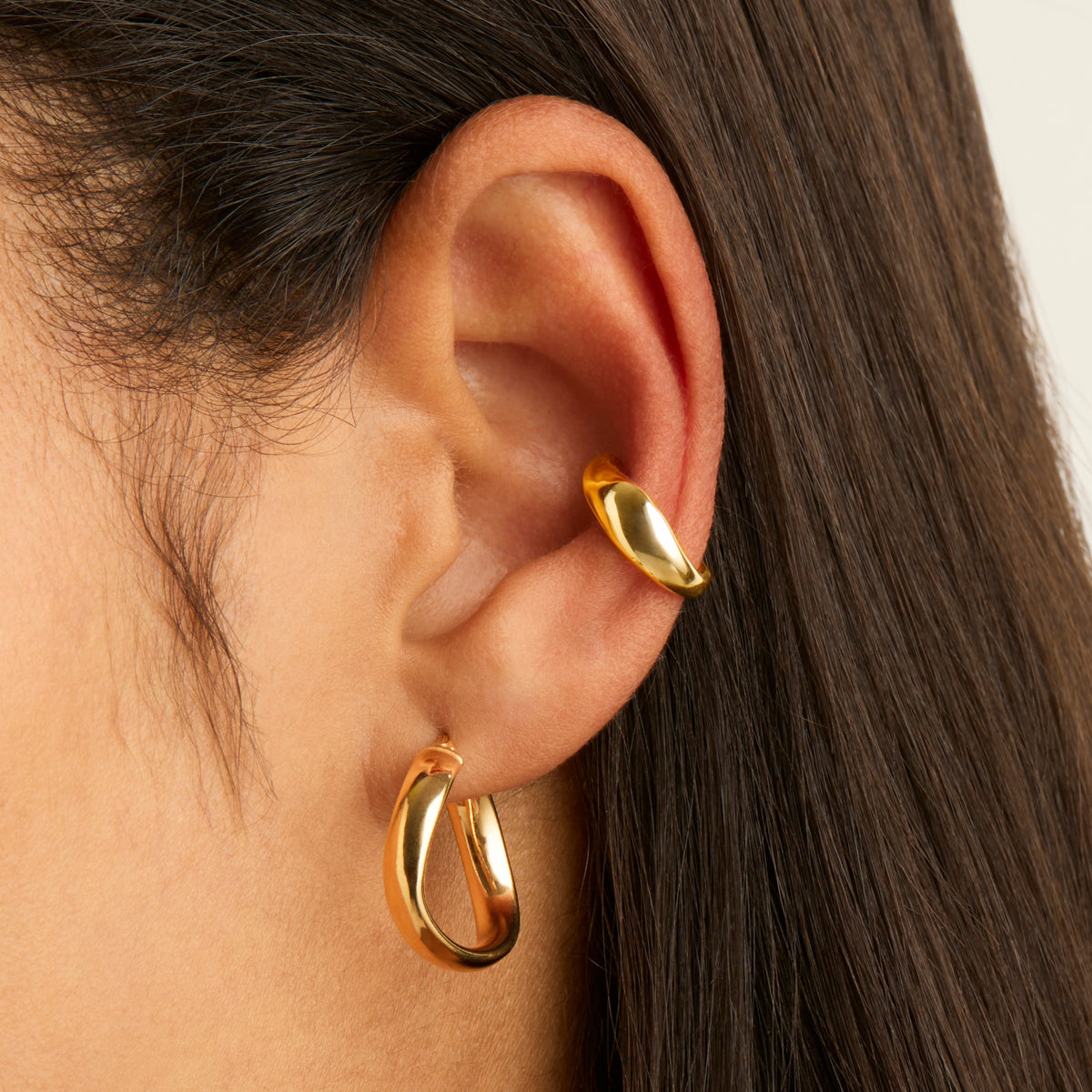
Understanding Gold-Plated Jewellery
Gold-plated jewellery occupies a unique position in the world of adornments, offering the lustrous appeal of gold with an accessible price point. At its core, gold-plated jewellery consists of a base metal, such as copper or silver, that has been covered with a very thin layer of gold, achieved through a process known as electroplating. This method allows for a variety of jewellery designs to enjoy the golden touch without the high cost associated with solid gold.
The Distinctions Among Solid Gold, Gold-Filled, and Gold-Plated Jewellery
To appreciate the nuances of gold-plated jewellery, it's crucial to understand how it differs from solid gold and gold-filled alternatives:
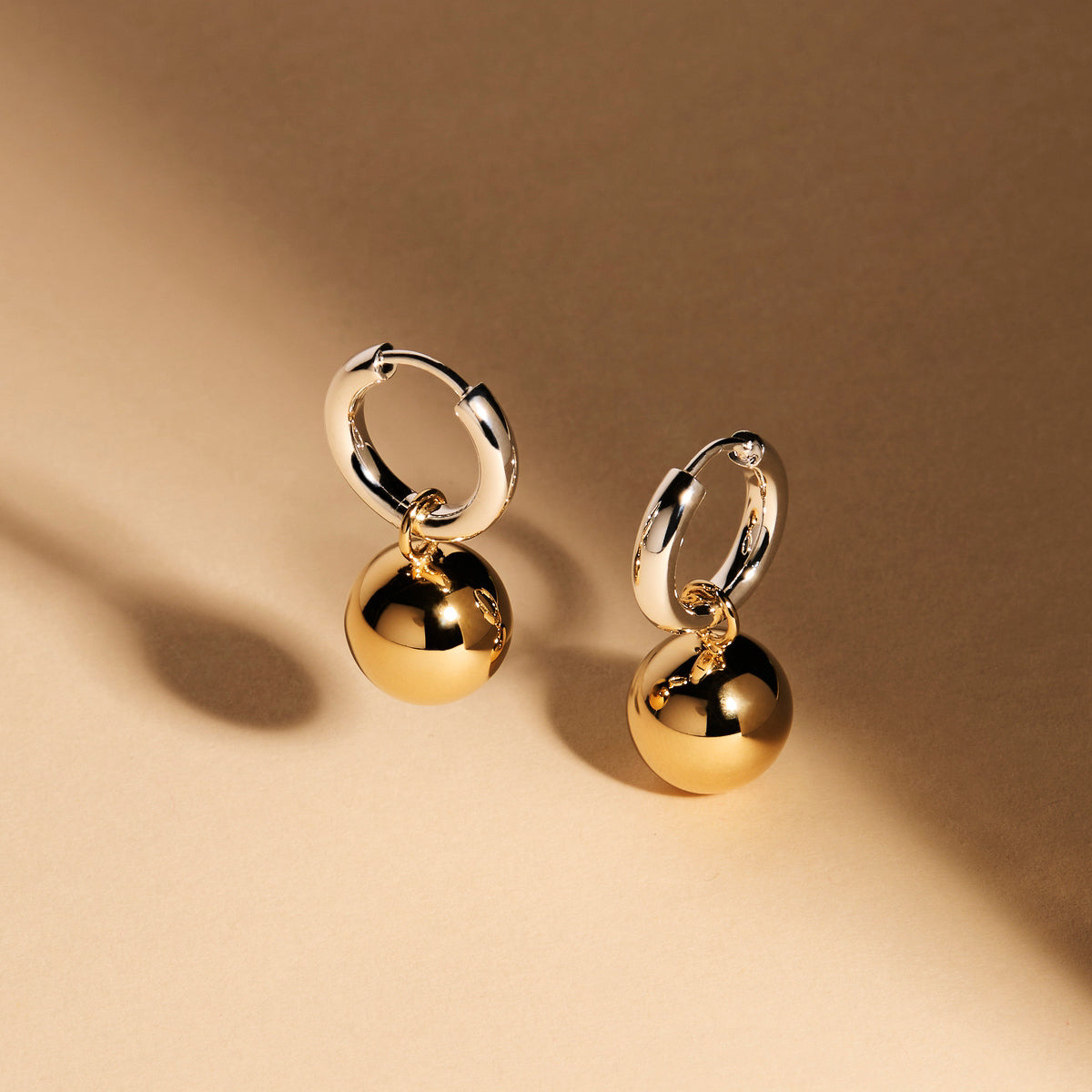
Solid Gold
As the name suggests, solid gold jewellery is made entirely from gold, though often alloyed with other metals to enhance its strength and durability. The purity of solid gold is measured in karats, with 24K being pure gold. It's the most valuable and durable form of gold jewellery, resistant to tarnishing and wear.
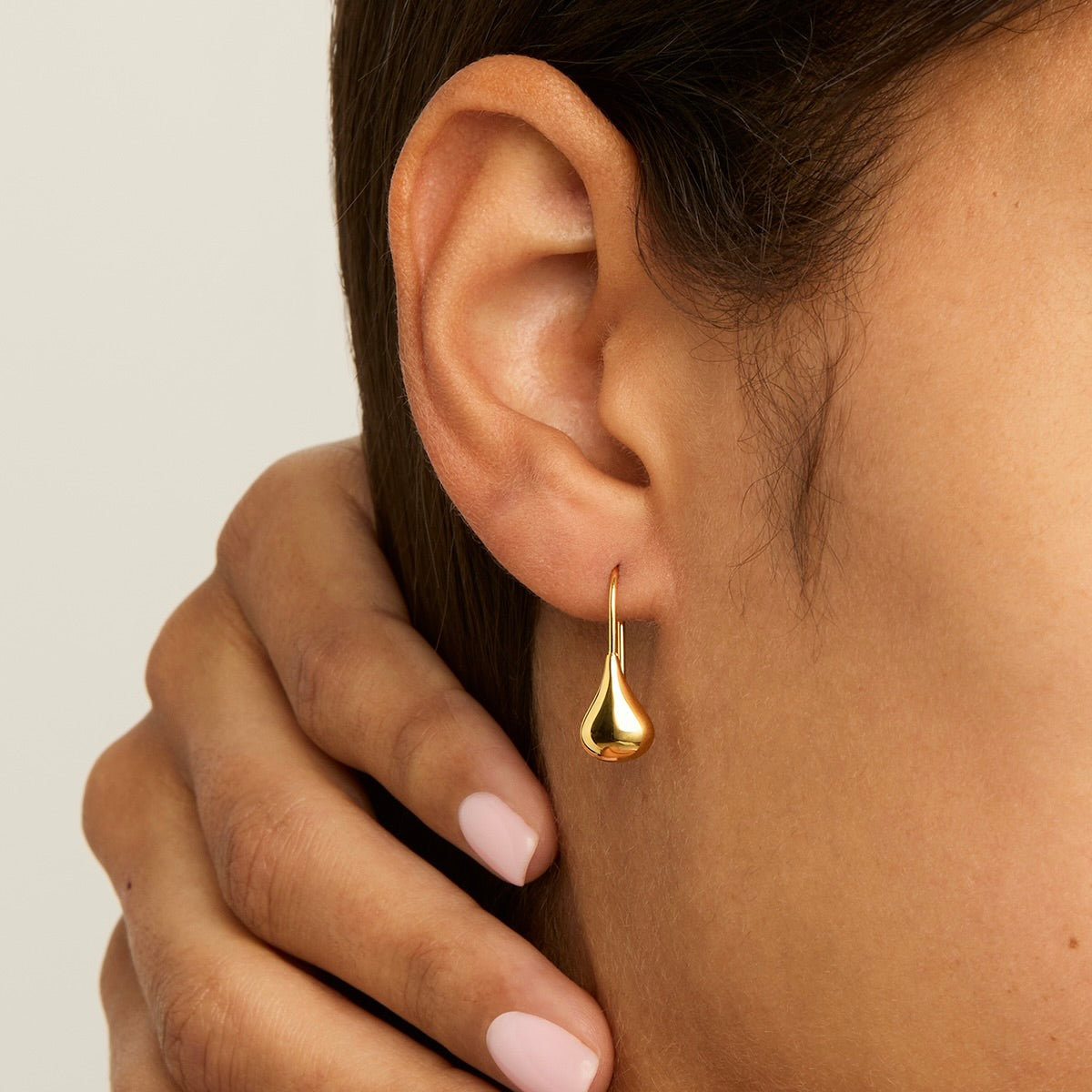
Gold-Filled
Gold-filled jewellery involves bonding a layer of gold to a base metal under high temperature and pressure. The gold layer in gold-filled items is significantly thicker than that of gold-plated pieces, making it more durable and longer-lasting. It's a middle ground between solid gold and gold-plated, both in terms of quality and price.
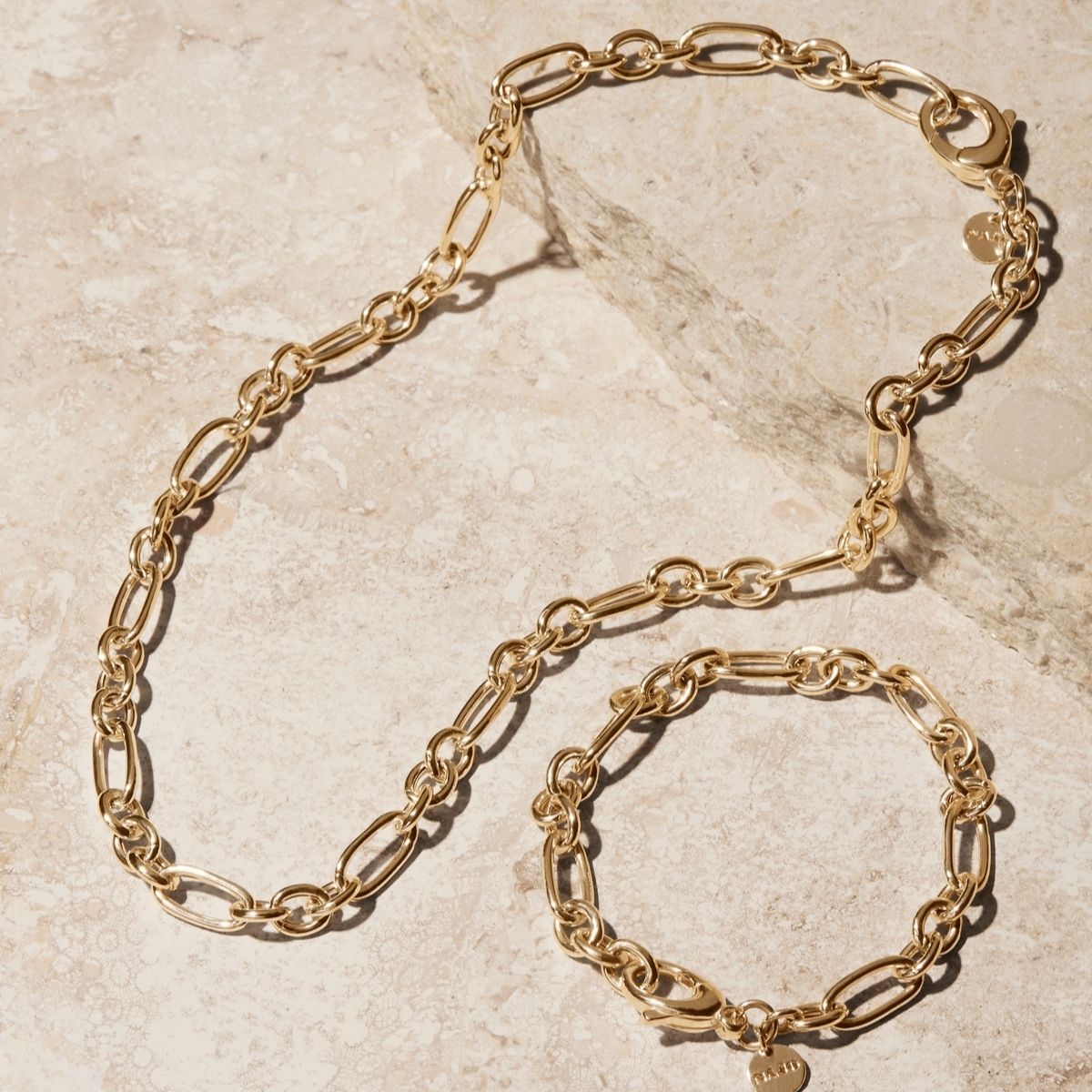
Gold-Plated
Gold-plated jewellery features the thinnest layer of gold, offering the appearance of solid gold but at a much lower durability and longevity. The base metal underneath can affect the piece's colour and overall durability. Gold-plated jewellery's beauty and affordability come with the caveat of its susceptibility to wear and tear. The thin gold layer can easily scratch, wear away, or tarnish when exposed to chemicals, sweat, and the elements, more so than solid gold or gold-filled pieces.
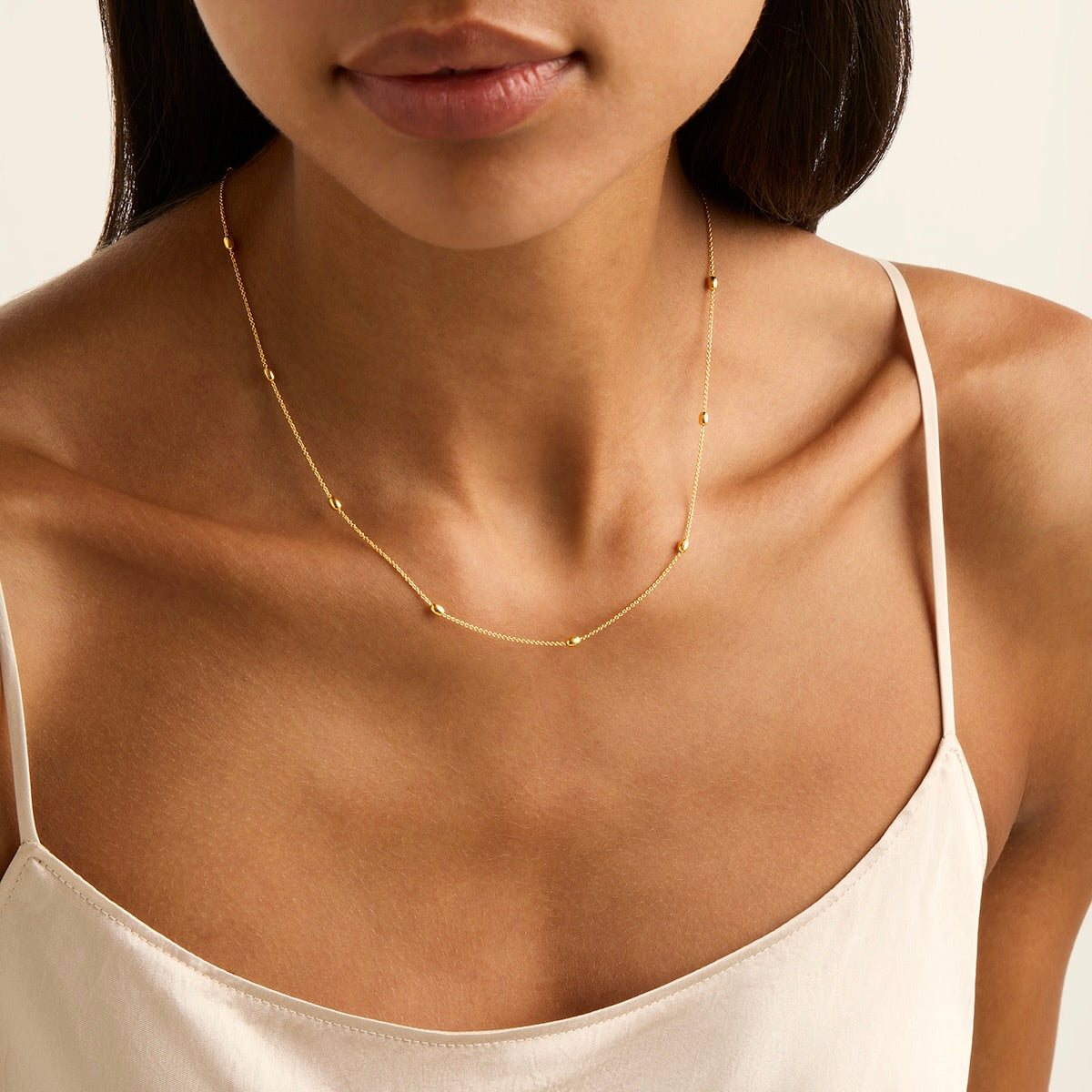
When to Clean Your Gold-Plated Jewellery
Maintaining the lustre and integrity of your gold-plated jewellery requires an understanding of when it's time for a gentle cleaning. Regular wear can gradually diminish its shine and contribute to the degradation of the gold layer. Recognising the signs that your jewellery needs cleaning can help preserve its beauty and extend its lifespan.
- Dullness or Loss of Shine: Over time, gold-plated pieces may lose their initial radiance, appearing dull and lacklustre. This is often the first sign that a cleaning is in order.
- Visible Tarnish or Discoloration: Exposure to elements and substances can lead to tarnishing, resulting in a darkened appearance or uneven coloration.
- Residue Build-Up: Build-up of products, dirt, or natural oils from the skin can create a layer of grime that masks the jewellery's shine.
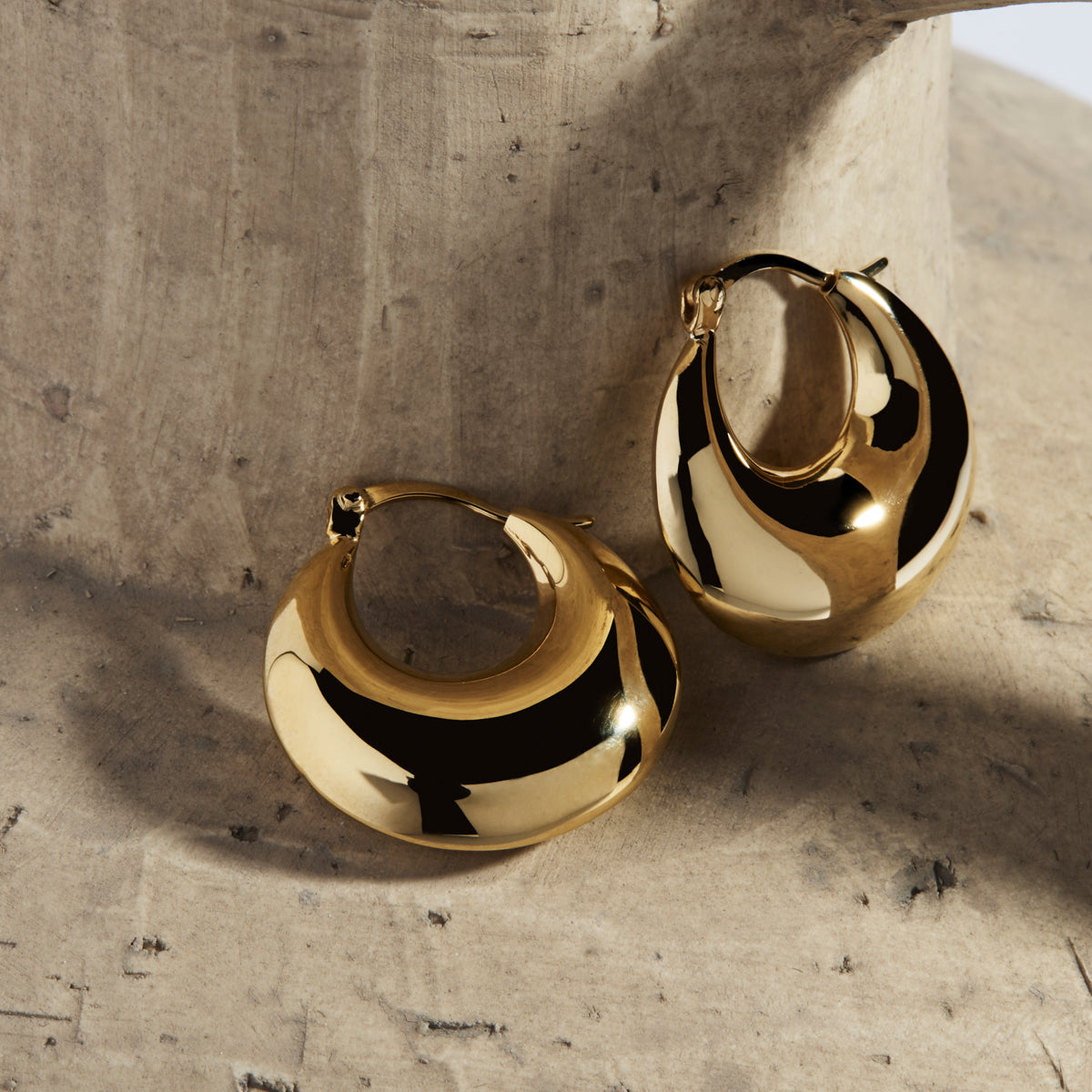
The Impact of Sweat, Cosmetics, and Chemicals
Understanding the effects of external factors on gold-plated jewellery is crucial for its care:
- Sweat: Perspiration is acidic and can erode the gold layer over time, leading to tarnish and wear. Regular exposure to sweat can significantly shorten the lifespan of your jewellery.
- Cosmetics: Lotions, perfumes, and makeup contain chemicals that can react with the gold plating, causing it to break down or become discoloured. It's advisable to apply any cosmetics and let them dry before wearing your jewellery.
- Chemicals: Household cleaners, chlorine in swimming pools, and even the chemicals in tap water can be harsh on gold-plated items. These substances can accelerate the tarnishing process and degrade the gold layer.
To mitigate these impacts, it's essential to clean your gold-plated jewellery gently and regularly. After identifying the need for cleaning, take prompt action to remove accumulated substances and restore your pieces' brilliance. Additionally, adopting preventative measures, such as removing jewellery during activities that promote sweat or exposure to chemicals, can help maintain the pristine condition of your gold-plated treasures.
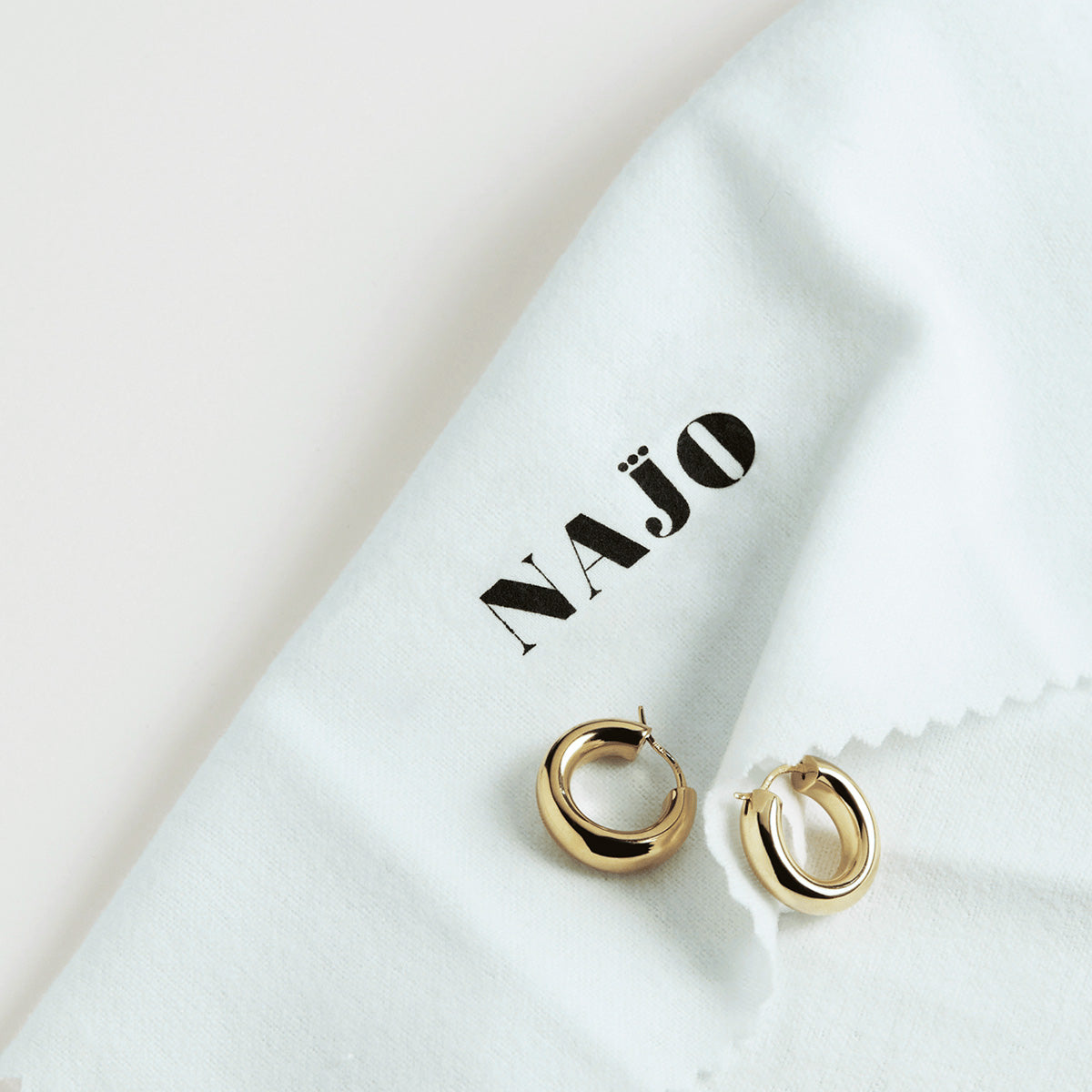
Materials Needed for Cleaning Gold-Plated Jewellery
To effectively clean your gold-plated jewellery while ensuring its longevity, having the right materials at hand is essential. Here’s what you’ll need for cleaning gold plated jewellery at home:
- Soft, Lint-Free Cloth: A soft, lint-free cloth is crucial for gently wiping the jewellery without scratching the delicate gold surface.
- Mild Dish Soap: Opt for a mild, non-abrasive dish soap to help dissolve grease and build-up without harming the gold plating.
- Warm Water: Lukewarm water is ideal for mixing with the dish soap to create a gentle cleaning solution.
- Soft-Bristled Brush (Optional): A soft-bristled brush, such as a baby toothbrush or a soft paintbrush, can be used for cleaning hard-to-reach areas or detailed pieces.
- Dry, Soft Towel: A dry, soft towel is needed for patting the jewellery dry after cleaning.
Preparing the Cleaning Solution
Mixing Mild Dish Soap with Warm Water: Begin by filling a small bowl with lukewarm water. Add a few drops of the mild dish soap and stir gently to mix. Ensure the solution is sudsy but not overly concentrated.
Dipping the Cloth into the Solution and Wiping the Jewellery: Dip the soft, lint-free cloth into the soapy water. Wring out excess liquid until the cloth is damp, not wet. Gently wipe the gold-plated jewellery with the cloth, paying special attention to areas that look tarnished or have residue build-up.
Using a Soft-Bristled Brush for Detailed Cleaning (If Necessary): For intricate designs or stubborn grime, lightly dampen the soft-bristled brush in the soapy water. Gently scrub the difficult spots, being careful not to apply too much pressure that could strip the gold plating.
Rinsing Jewellery with Lukewarm Water: After cleaning, rinse the jewellery under lukewarm running water to remove any soap residue. Ensure the water flow is gentle to avoid damaging the jewellery.
Patting Dry with a Soft Towel and Air-Drying Completely: Once rinsed, lightly pat the jewellery dry with a soft towel. Avoid rubbing or applying pressure. After patting, lay the pieces on a clean, soft towel and allow them to air-dry completely. Ensuring the jewellery is thoroughly dry before storage or wear is crucial to prevent tarnish and damage.
Dos and Don’ts of Cleaning Gold-Plated Jewellery
Maintaining the allure of your gold-plated jewellery involves more than just regular cleaning; it requires a mindful approach to both cleaning and storage. Here are some concise guidelines to ensure your pieces remain radiant:

Dos
Clean Regularly but Gently: Regular cleaning is vital to prevent the buildup of oils and substances that can tarnish gold-plated jewellery. Use a soft cloth and mild soap solution to gently wipe your pieces, ensuring you're not scratching or wearing down the gold layer.
Store Jewellery Properly: After cleaning and ensuring your jewellery is completely dry, store it in a soft-lined jewellery box or a pouch. Keeping pieces separated prevents scratches and reduces exposure to air and humidity, which can cause tarnishing.
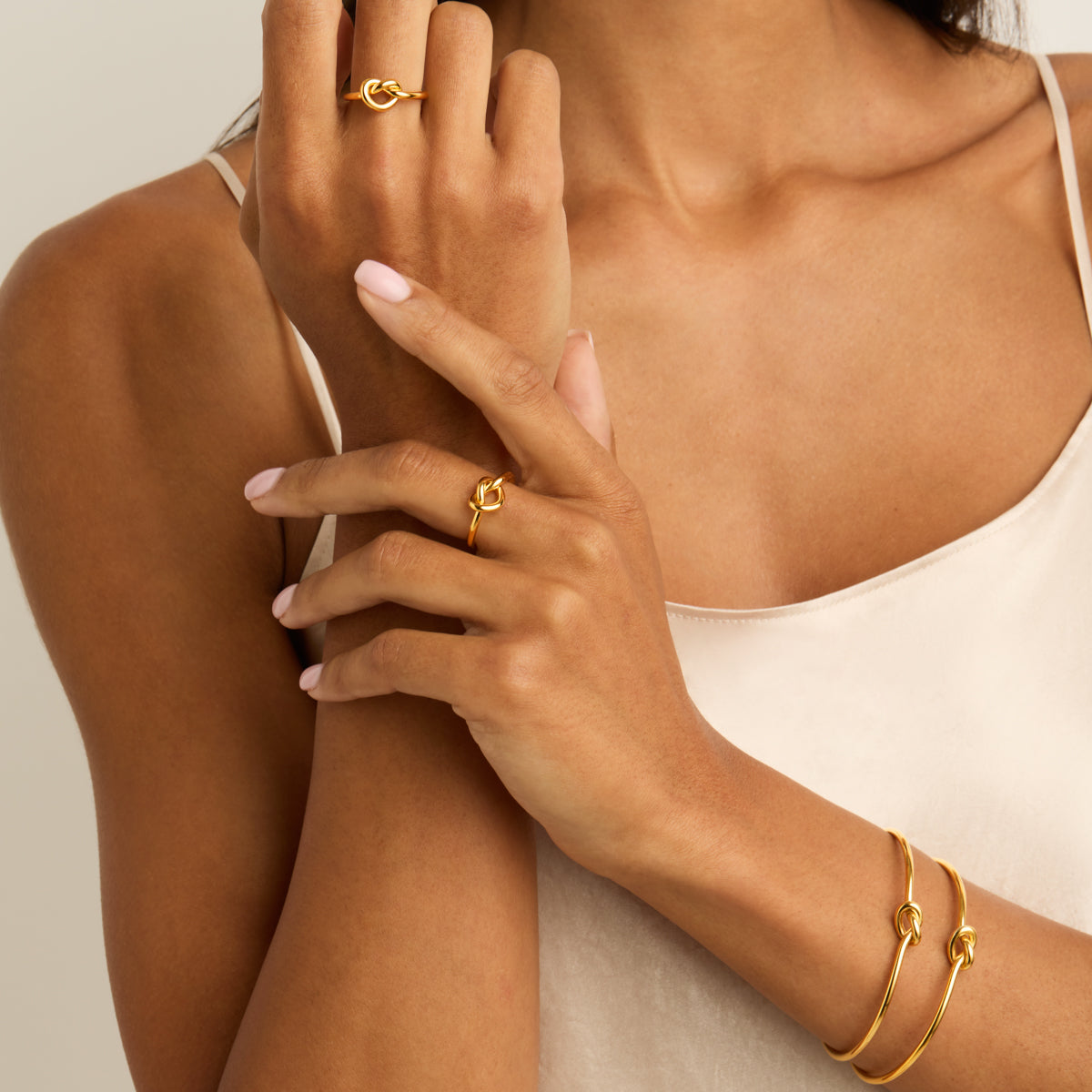
Don'ts
Avoid Using Harsh Chemicals or Abrasive Cleaners: Harsh chemicals, including chlorine, bleach, and strong detergents, can strip the gold layer right off. Similarly, abrasive cleaners or cloth can scratch the surface. Always opt for gentle cleaning agents and soft materials.
Don't Soak Gold-Plated Jewellery in Water for Long Periods: Soaking can weaken the bond between the gold layer and the base metal, leading to peeling or flaking. Brief rinses under lukewarm water are sufficient for cleaning, followed by immediate drying.
Browse NAJO’s range of gold plated jewellery
Embark on a journey of style and sophistication with NAJO, your trusted destination for gold-plated jewellery. For over 30 years, NAJO has been dedicated to crafting gold-plated pieces that seamlessly blend timeless elegance with contemporary flair.
Celebrate our passion for excellence and discover a collection where each piece tells a story of beauty and craftsmanship. Whether you're searching for the perfect gold plated rings, gold plated necklaces, gold plated earrings or gold plated bracelets, elevate your everyday look or a stunning statement piece for special occasions.
FAQs
Can you fix tarnished gold-plated jewellery?
To rejuvenate tarnished gold-plated jewellery, it's essential to handle it delicately. Start by lightly cleaning with a solution of mild soap and lukewarm water, using a soft cloth for gentle application and polishing. For tougher tarnish, opt for cleaners specifically formulated for gold-plated pieces.
Maintaining the jewellery's lustre involves not just careful cleaning but also proper storage in a moisture-free, sealed environment. Should the plating suffer extensive wear or damage, seeking professional re-plating services may be necessary for full restoration.
How do you clean gold-plated jewellery without damaging it?
To clean gold-plated jewellery without causing damage, prepare a solution of warm water and mild dish soap. Soak a soft, lint-free cloth in the solution and gently wipe the jewellery to remove dirt and grime.
Avoid soaking the jewellery directly in water. If necessary, use a soft-bristled brush for detailed areas but do so with care to prevent scratching. Rinse the jewellery by wiping it with a damp cloth soaked in plain water, then dry it thoroughly with a clean, soft cloth. It's important to avoid harsh chemicals and abrasives, as well as excessive water exposure, to maintain the integrity of the gold plating. Regular, gentle cleaning will help keep your gold-plated jewellery looking its best.













